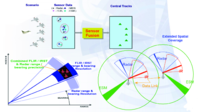
Photo from wikipedia
Rapid and low-cost 3D scanning system becomes a common solution for prosthetic designers and engineers to acquire accurate 3D geometrical model of the involved patient. Multiple Kinect sensor fusion solutions… Click to show full abstract
Rapid and low-cost 3D scanning system becomes a common solution for prosthetic designers and engineers to acquire accurate 3D geometrical model of the involved patient. Multiple Kinect sensor fusion solutions have been proposed but still, there is a lack of fusion scheme within a single workstation and a systematic reconstruction error analysis. The objective of the present study was to develop a new Kinect sensor fusion scheme running on a single workstation and an error compensation strategy. Architecture of a 3D scanning system for the lower residual limb was proposed. Four Kinect sensors were used to develop the fusion scheme. An error compensation approach based on linear regression method was performed. Then, an iterative rigid multi-set registration method was proposed. Different primitive geometries (cylindrical objects, box) with well-known physical dimensions were designed, fabricated and used for the evaluation process. Obtained results showed that the error compensation strategy leads to a reduction of around 40% of 3D geometrical reconstruction error for the residual stump-like structure. The total scanning and processing time is 25.4 ± 2.5 seconds. Moreover, our novel iterative rigid multi-set registration method leads to an improvement of accuracy of 60% compared to conventional registration method. Our proposed 3D scanning system using multiple Kinect cameras with error compensation strategy is expected to reduce the design cost and improve the design accuracy. As perspective, this 3D scanning system with fusion scheme will be integrated into a Computer-Aided Design (CAD) system with soft tissue deformation feedbacks for lower limb prostheses.
Journal Title: IEEE Sensors Journal
Year Published: 2020
Link to full text (if available)
Share on Social Media: Sign Up to like & get
recommendations!